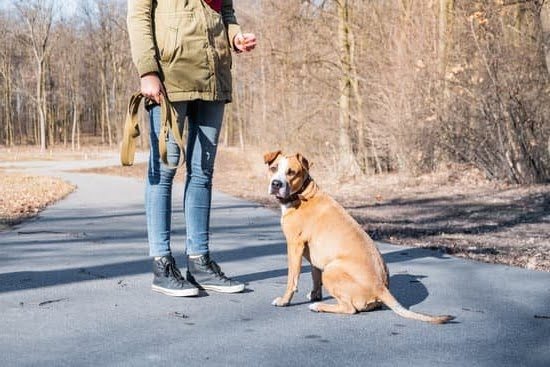Are show dogs trained not to use bathroom in showring? Show dogs are meticulously trained to exhibit impeccable behavior, including bathroom etiquette, in the showring. Understanding the world of show dogs involves recognizing the high standards and expectations placed on these canine competitors. This article delves into the importance of behavior training, specifically focusing on bathroom etiquette, for show dogs and the methods used to achieve it.
In the competitive world of dog shows, behavior training is crucial for ensuring that show dogs present themselves as disciplined and well-behaved during competitions. This extends to their ability to maintain proper bathroom etiquette while in the showring. Show dog handlers and trainers invest significant time and effort into teaching these animals how to control their bodily functions and abide by certain conduct in such high-pressure environments.
The process of training show dogs not to use the bathroom in the showring involves various techniques and methods tailored to suit each individual dog’s needs. It requires patience, consistency, and persistence from handlers and trainers. Additionally, there are common challenges that arise during this training process, which necessitate specific approaches to address them effectively.
The Importance of Behavior Training in Show Dogs
Show dogs undergo extensive behavior training to ensure they exhibit the proper etiquette and conduct during shows. This includes bathroom training, which is crucial for maintaining a professional and polished appearance in the showring. Show dogs must be trained not to use the bathroom while competing or being judged, as this is an important aspect of their overall behavior. Here are some key points to consider when it comes to bathroom training for show dogs:
- Consistent routine: Show dogs, like any other dog, need a consistent bathroom schedule. Handlers and trainers ensure that show dogs are taken out for regular bathroom breaks before and after shows, as well as during breaks in competition.
- Positive reinforcement: Using positive reinforcement techniques, such as treats and verbal praise, can help show dogs understand that they should only relieve themselves outside of the showring. This encourages them to hold it in while inside the ring.
- Crate training: Many handlers use crate training to reinforce bathroom etiquette in show dogs. By keeping the dog’s crate clean and comfortable, it encourages the dog to wait until they are taken outside to do their business.
Handlers and trainers play a crucial role in maintaining show dog behavior, including bathroom etiquette. Their diligent efforts ensure that show dogs are well-behaved and adhere to proper conduct in the showring. By instilling good behavior habits through consistent training and positive reinforcement, handlers and trainers set the stage for a successful showing experience for both the dog and themselves.
Show Dog Etiquette
In order to achieve this level of bathroom etiquette, show dogs undergo specialized training that goes beyond basic obedience training. Handlers and trainers use several techniques and methods to ensure that show dogs do not use the bathroom in the showring. Some common methods include:
- Scheduling regular potty breaks: Handlers and trainers create a schedule for regular potty breaks to ensure that the show dogs have ample opportunities to relieve themselves before entering the showring.
- Positive reinforcement: Show dogs are trained using positive reinforcement techniques, rewarding them when they exhibit desired behavior, such as holding their bladder until given permission to go outside the showring.
- Crate training: Crate training is often used to teach show dogs to hold their bladder for extended periods of time without feeling uncomfortable or anxious.
Despite these methods, there are still common challenges in bathroom training for show dogs. Show dogs may feel stressed or anxious in unfamiliar environments, causing them to inadvertently break bathroom etiquette rules. However, with consistent training and support from handlers and trainers, most show dogs can be taught to uphold proper bathroom etiquette while competing.
Techniques and Methods Used to Train Show Dogs Not to Use the Bathroom in the Showring
When it comes to training show dogs not to use the bathroom in the showring, there are several techniques and methods that are commonly used by handlers and trainers. These methods are essential in maintaining show dog etiquette and ensuring a successful performance in the ring.
Positive Reinforcement
One of the most widely used methods for training show dogs is positive reinforcement. This involves rewarding the dog with treats, praise, or toys when they exhibit the desired behavior of holding their bathroom needs while in the showring. By associating not going to the bathroom with positive rewards, show dogs can learn to control their urges during the competition.
Schedule Management
Another effective technique is managing the dog’s schedule for food, water, and bathroom breaks. Show dogs are often put on a strict schedule for feeding and watering to regulate when they need to go to the bathroom. By controlling these factors, handlers can minimize the likelihood of accidents in the showring.
Desensitization and Exposure
Desensitization involves gradually exposing show dogs to stimuli that might trigger their need to use the bathroom, such as specific scents or sounds. Over time, through controlled exposure and training, show dogs can learn to ignore these triggers while in the ring.
These techniques require patience and consistency from both handlers and trainers. It is important to note that each dog may respond differently to these methods, so it is crucial to tailor the training approach based on individual needs.
Regardless of which method is used, it’s crucial that all efforts made are always done in a humane manner. With proper training and techniques, show dogs can learn how to maintain their composure throughout their performances in order not use the bathroom inside of a showring.
Common Challenges in Bathroom Training for Show Dogs
Bathroom training for show dogs can be a challenging aspect of preparing them for the showring. Despite their natural instincts, show dogs are indeed trained not to use the bathroom while in the showring. This requires a great deal of patience, consistency, and dedication from both the handlers and trainers.
One common challenge in bathroom training for show dogs is their natural instinct to relieve themselves when they are nervous or stressed. The unfamiliar surroundings and the presence of other dogs can make some show dogs feel uneasy, leading them to want to use the bathroom. Additionally, the excitement and energy of a show can also make it difficult for show dogs to hold their bladder or bowels.
Another challenge that handlers and trainers encounter when training show dogs is the unpredictability of their bathroom schedule. Show dogs may have specific times when they need to use the bathroom, but this can vary depending on several factors such as their diet, exercise routine, and overall health. As a result, it can be challenging to anticipate when a dog might need to go while in the middle of a competition.
Furthermore, some show dogs may simply struggle with understanding that they should hold off on using the bathroom until they are outside of the showring. It takes time and consistent training for them to grasp this concept, especially if they have not been properly taught from a young age. Show dog handlers and trainers must be persistent in reinforcing these principles throughout the entire training process in order to achieve success in maintaining proper bathroom etiquette during shows.
The Role of Handlers and Trainers in Maintaining Show Dog Etiquette
Show dog handlers and trainers play a crucial role in maintaining show dog etiquette, especially when it comes to bathroom training in the showring. They are responsible for ensuring that the show dogs are well-behaved and adhere to the expected standards of behavior during competitions. This includes making sure that the show dogs do not use the bathroom while inside the showring.
Training and Reinforcement
Handlers and trainers invest a significant amount of time and effort into training and reinforcing appropriate behaviors in show dogs. This includes teaching them to control their bodily functions during the excitement and stress of a show competition. They use positive reinforcement techniques such as rewards, praise, and consistency to instill the desired behavior in show dogs.
Consistent Routine
Consistency is key when it comes to maintaining show dog etiquette, including bathroom training. Handlers and trainers establish a consistent routine for their show dogs, which includes scheduled bathroom breaks before entering the showring. By sticking to a routine, they can help minimize the likelihood of accidents inside the ring.
Handlers and trainers also closely observe their show dogs for any signs of discomfort or need for a bathroom break during a competition. They are prepared to quickly and discreetly remove their dogs from the ring if necessary, allowing them to relieve themselves in an appropriate area outside of the competition space. This proactive approach helps maintain both the dignity of the show dog and the smooth flow of the competition.
Tips for Maintaining Show Dog Bathroom Etiquette Outside of the Showring
As important as it is for show dogs to be trained not to use the bathroom in the showring, it is equally crucial for their handlers and trainers to maintain their bathroom etiquette outside of the showring. Show dogs are expected to display good behavior not only during competitions but also when they are out and about with their handlers.
This means that handlers should continue to reinforce and uphold their show dog’s bathroom training even outside of the show environment.
One tip for maintaining show dog bathroom etiquette outside of the showring is to establish a consistent routine. Just like with any other type of training, consistency is key. Handlers should take their show dogs out for walks and bathroom breaks at regular intervals throughout the day. By establishing a routine, show dogs can develop a sense of predictability and stability, which can help them maintain their bathroom etiquette in various settings.
Another tip is to provide positive reinforcement for good behavior. When a show dog successfully uses the designated bathroom area, handlers and trainers should praise and reward them accordingly. Positive reinforcement can help show dogs understand what is expected of them and encourage them to continue displaying good bathroom etiquette even when they are not in the showring.
Additionally, it is important for handlers to be prepared when taking their show dogs out in public. This means bringing necessary supplies such as waste bags, cleaning products, and portable water bowls. By being proactive and prepared, handlers can address any potential accidents or issues promptly and ensure that their show dogs continue to exhibit proper bathroom etiquette no matter where they are.
The Impact of Show Dog Bathroom Etiquette on the Overall Show Experience
Maintaining proper bathroom etiquette is crucial for show dogs, as it significantly impacts their overall show experience. A well-trained show dog not only performs flawlessly in the ring but also behaves impeccably outside of it, including in matters related to using the bathroom. Show dog owners and handlers understand the importance of this aspect and put a great deal of effort into ensuring that their dogs exhibit exemplary behavior at all times.
One key reason why show dog bathroom etiquette is so important is that it reflects on the professionalism and dedication of the dog’s owner and handler. Judges and fellow competitors take note of every aspect of a show dog’s behavior, including how they handle their bathroom needs. A well-behaved show dog, both inside and outside of the ring, demonstrates an owner’s commitment to training and maintaining high standards, which can positively influence judging decisions.
In addition to making a positive impression on judges and competitors, good bathroom etiquette from show dogs contributes to creating an enjoyable environment for everyone involved in the show. Accidents or inappropriate behavior can be disruptive and create unnecessary distractions. As such, maintaining proper bathroom training not only benefits the individual show dog but also enhances the overall experience for everyone present at the event.
| Importance | Impact |
|---|---|
| Demonstrates dedication and professionalism | Positively influences judging decisions |
| Creates an enjoyable environment | Enhances overall experience for everyone present |
Conclusion
In conclusion, the world of show dogs is a highly competitive and prestigious environment that requires a great deal of discipline and training. One important aspect of this training is ensuring that show dogs are well-behaved and maintain proper etiquette, even in the high-pressure atmosphere of the showring. This includes not using the bathroom during competitions, which can be challenging but is crucial for a successful show experience.
Handlers and trainers play a significant role in the bathroom training of show dogs, utilizing various techniques and methods to instill proper behavior. It takes patience, consistency, and positive reinforcement to teach show dogs to control their bathroom urges while in the showring.
Despite these efforts, there may still be challenges along the way, such as nervousness or anxiety in new environments. However, with dedicated training and support from their handlers and trainers, many show dogs are able to overcome these challenges and maintain their composure during competitions.
Outside of the showring, maintaining bathroom etiquette for show dogs is also important. This not only reflects positively on the dog and its handler but also contributes to creating a respectful and organized environment for all participants.
Ultimately, the impact of show dog bathroom etiquette extends to the overall experience of the show, promoting professionalism and integrity within the industry. Show dog enthusiasts understand that this level of dedication is necessary for success in this competitive arena, resulting in well-behaved and impressive performances from our beloved canine companions.
Frequently Asked Questions
Are Show Dogs Potty Trained?
Show dogs are typically potty trained just like any other pet. They are trained to relieve themselves in specific areas and at specific times to ensure that they remain clean and well-groomed for the show.
What Happens if a Dog Poops During a Dog Show?
If a dog poops during a dog show, it is considered a mishap or accident, and handlers are prepared to quickly clean up the mess. The handler may discreetly remove the waste so as not to disturb the ongoing event.
How Do I Train My Dog to Pee in the Shower?
Training a dog to pee in the shower can be done by associating the shower area with positive experiences, using verbal cues or commands, and rewarding the dog when they successfully urinate in that spot. Consistency and patience are key in this training process.

Welcome to the blog! I am a professional dog trainer and have been working with dogs for many years. In this blog, I will be discussing various topics related to dog training, including tips, tricks, and advice. I hope you find this information helpful and informative. Thanks for reading!





